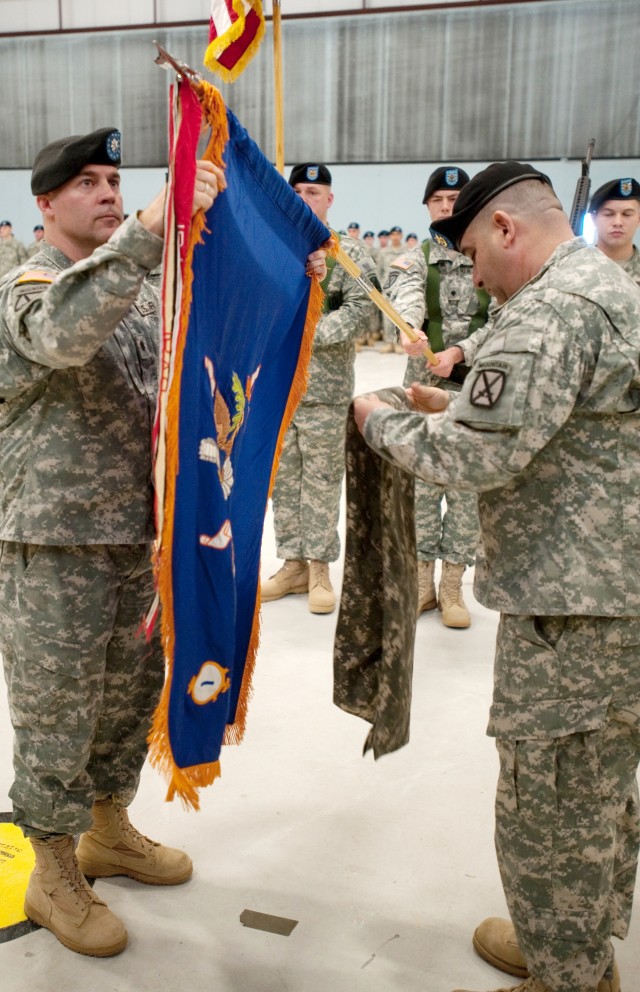
FORT DRUM, N.Y. - The 1st Attack Reconnaissance Battalion, 10th Aviation Regiment "Tigersharks," a battalion
that recently moved to Fort Drum from Fort Stewart, Ga., received an official welcome here as a unit of the 10th Combat Aviation Brigade during an uncasing ceremony Feb. 5 in a hangar at Wheeler-Sack Army Airfield.
"This ceremony symbolizes the culmination of years of planning and outpouring of effort from Soldiers and supporters alike for this unit's move from Hunter Army Airfield to Fort Drum," said Col. Pedro Almeida, 10th CAB commander.
Although the unit only recently arrived at Fort Drum, it has been working with 10th Mountain Division (LI) for the past two years.
The "Tigersharks" were deployed with 10th CAB in the fall of 2008 in support of Operation Iraqi Freedom where Soldiers were assigned to the brigade. The battalion has belonged to 10th Mountain Division since.
"We've been training with the 10th CAB since 2007. It's great to finally be with them," said Lt. Col. Michael Slocum, 1-10 Aviation commander. "Our Soldiers are extremely excited as well."
"I am happy to report that this attack battalion is finally home with the team they have been a part of the last two years," Almeida said.
The Tigersharks bring with them new aviation capabilities for the division, being the first AH-64 Apache helicopter battalion stationed here.
"The 10th CAB is truly equipped to execute the entire spectrum of military operations, from peacetime engagement to high-intensity conflict," Almeida said. "They are the first AH-64 Apache battalion stationed at Fort Drum. The mere location of this battalion now opens up for assignment an entire sector of Army aviation specialists who were ... previously barred from service in the North Country."
The battalion brings with it roughly 25 Apaches, helicopters primarily designed for attack and reconnaissance.
The unit traces its history to the Flying Tigers of the American Volunteer Group, who flew combat operations over Burma and China during World War II.
"Like the Flying Tigers of the Pacific, these Tigersharks bring a professionalism and expertise that is impossible to defeat," Almeida said.

Social Sharing